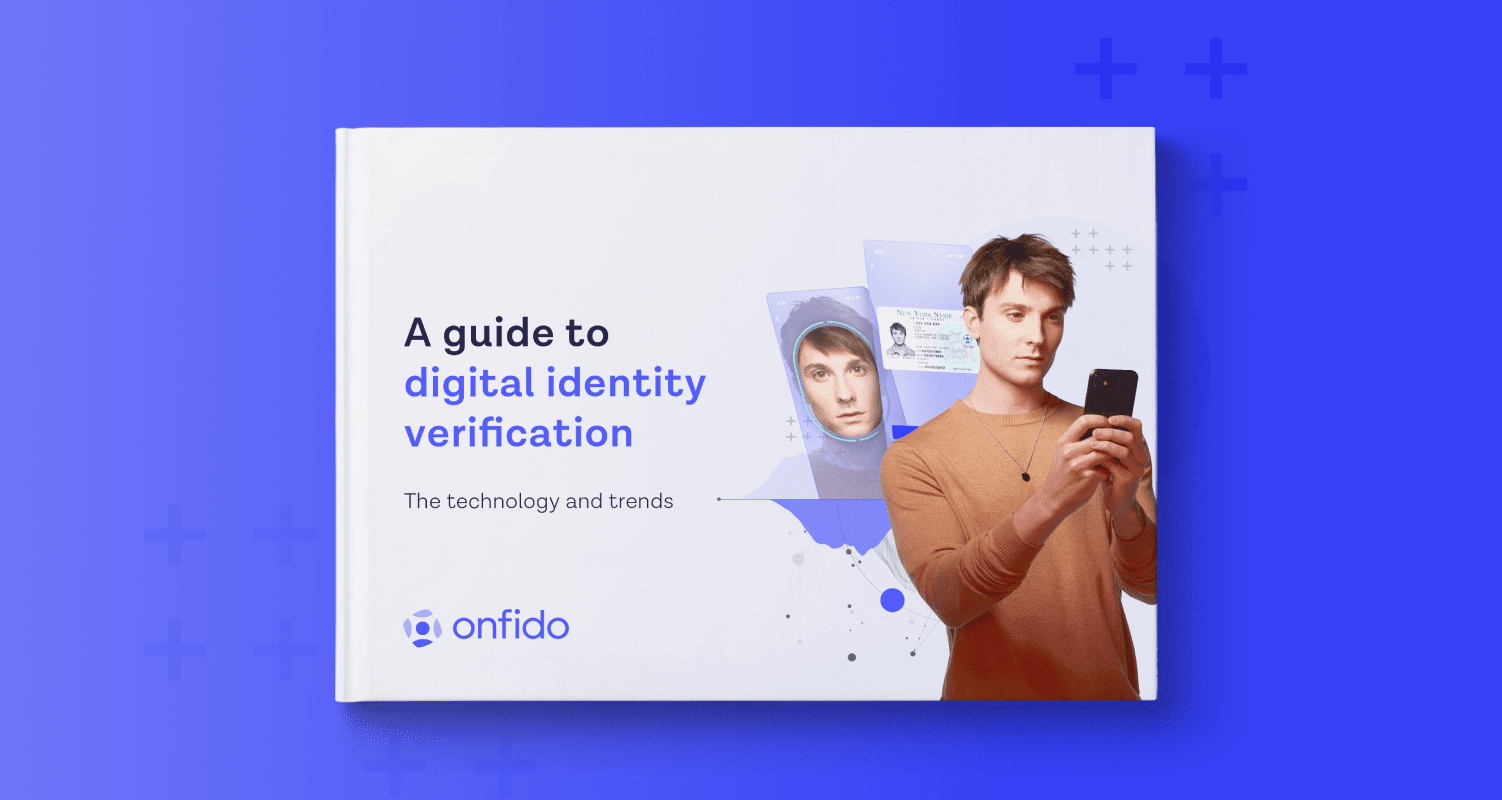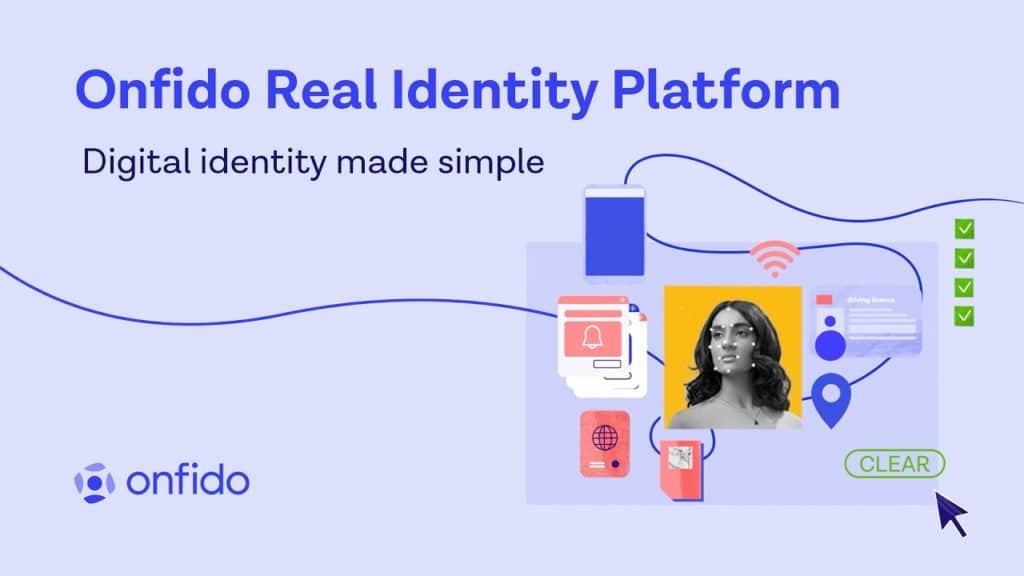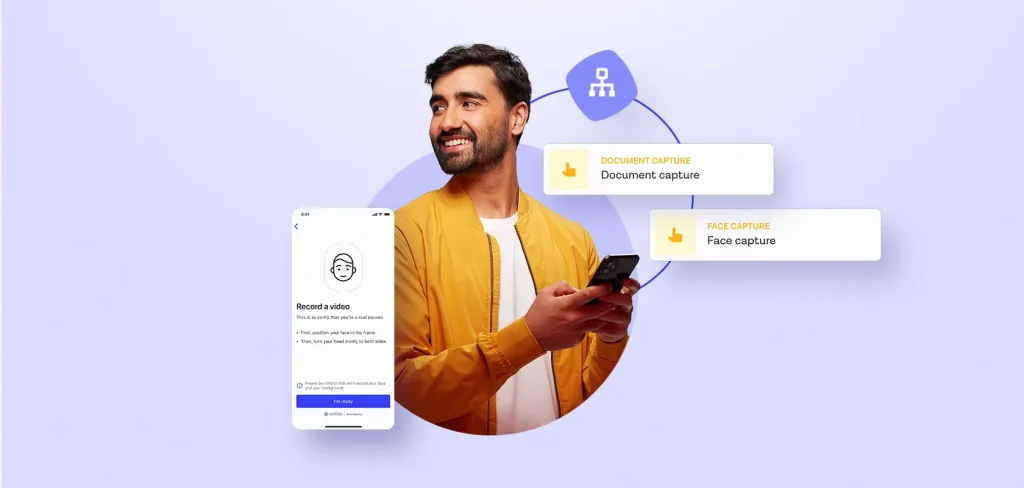
Identity is defined as ‘who a person is, or the qualities of a person that make them different from others.’ In other words, identity is a set of claims that can be used to describe a unique person. These can include permanent traits like date of birth, ethnicity and fingerprints. Or semi-permanent traits like height, weight, eye color and name.
Verification, or to verify something, proves or checks that something exists, or is true or correct. So identity verification is a process that validates a person’s identifying traits, and verifies them against a real, physical human.
Digital identity verification is how businesses confirm that a customer is who they say they are, online. They do this by assessing personal information and personal data related to an individual.
An overview of digital identity verification
Businesses usually conduct verification (or at least partial verification) at onboarding during the account creation or sign-up process. For regulated industries such as financial services, this is a vital step. KYC and AML regulations mandate that customer identification and verification must happen at onboarding.
Some common use cases for digital identity verification include:
- Verification for new account opening (user onboarding)
- Onboarding remote workforces
- KYC and AML compliance for financial services
- Age verification for restricted products/services
- Player verification for iGaming
- Fraud detection and prevention
- Driver verification for transport
Download the Guide to Digital Identity Verification to discover how the identity verification landscape has shifted and where the future of onboarding is heading.
Identity document verification
A big part of any digital identity verification process is document verification. This is where the process starts because we must have a source of truth to tie a real person to.
So how does document verification work?
- A user takes a photo of their identity document: Using a smartphone or webcam, users take a photo of their ID. If the phone and document are NFC enabled, they can also tap them together to unlock additional security features.
- AI verifies the document is genuine: By examining the visual, data, and metadata elements of each document, AI can determine whether its genuine or fraudulent.
- Businesses make decisions based on the results: The outcome of the check helps business decide who to onboard onto to their platform.
Document verification is often combined with biometric verification to ensure identity documents are presented by their rightful owners, to tie the document to a real person, and to help prevent identity fraud.
What are the benefits of digital identity verification?
Users of online services are now connected 24/7 and gravitate towards simple digital user experiences. Businesses in every industry are moving to digital models. Companies are using digital infrastructure to connect people with what they want and need right now. Whether that's to open a bank account, to shop, or to travel.
Similarly, many of the traits that make us unique are now stored as digital information. Not only do we have physical identity documents, we all also have digital credentials. Digital identity verification is the natural progression of verification in person. After all, it can speed up the process, and removes obstacles such as geographical boundaries.
Today, verification is nearly always done in a digital setting. It’s no longer scalable, or competitive, for businesses to rely on in-person verification alone.
Digital identity verification is important because it answers some of the fundamental questions businesses want to know:
- Who is this person? Can I verify their identity?
- Is this person a genuine customer or a fraudster?
- Is this person low or high risk?
- Can I onboard this person to my business?
Digital identity verification solutions: how is digital identity verification used in business?
The most common digital identity verification solutions combine different types of checks. For example, data verification (checks via trusted sources like databases) document verification and biometric verification.
Document verification works by analyzing a government-issued identity document. It checks that the document is genuine and valid. Biometric verification matches a customer’s facial biometrics to those on the identity document.
This way, businesses know that the identity document belongs to the person presenting it. This helps protect against stolen IDs and identity thefts. Biometrics can also help protect businesses against synthetic identity fraud, the fastest-growing form of fraud in the US.
Top digital identity verification companies
There are many digital identity verification companies that offer digital ID checks. They range from document verification to full-service digital identity platforms.
Stitching together identity verification solutions from multiple vendors is costly and clunky, and creates a bad customer experience for your users. Using one vendor for end-to-end identity verification means businesses can customize the process.
Onfido has 10 years of experience and research in digital identity verification, and simplifies digital identity for everyone. Onfido’s Real Identity Platform allows you to orchestrate award-winning document and biometric verifications. Plus trusted data sources and fraud detection signals. It’s all powered by Atlas™, our award-winning AI.
Fight fraud, navigate compliance, increase customer acquisition and lower costs while creating custom digital identity verification workflows.
See why more than 900 global businesses use Onfido for their digital identity verification needs. Or try for yourself with our free trial.
Discover the Onfido Real Identity Platform and the different types of verification you can layer to really know your customers.






